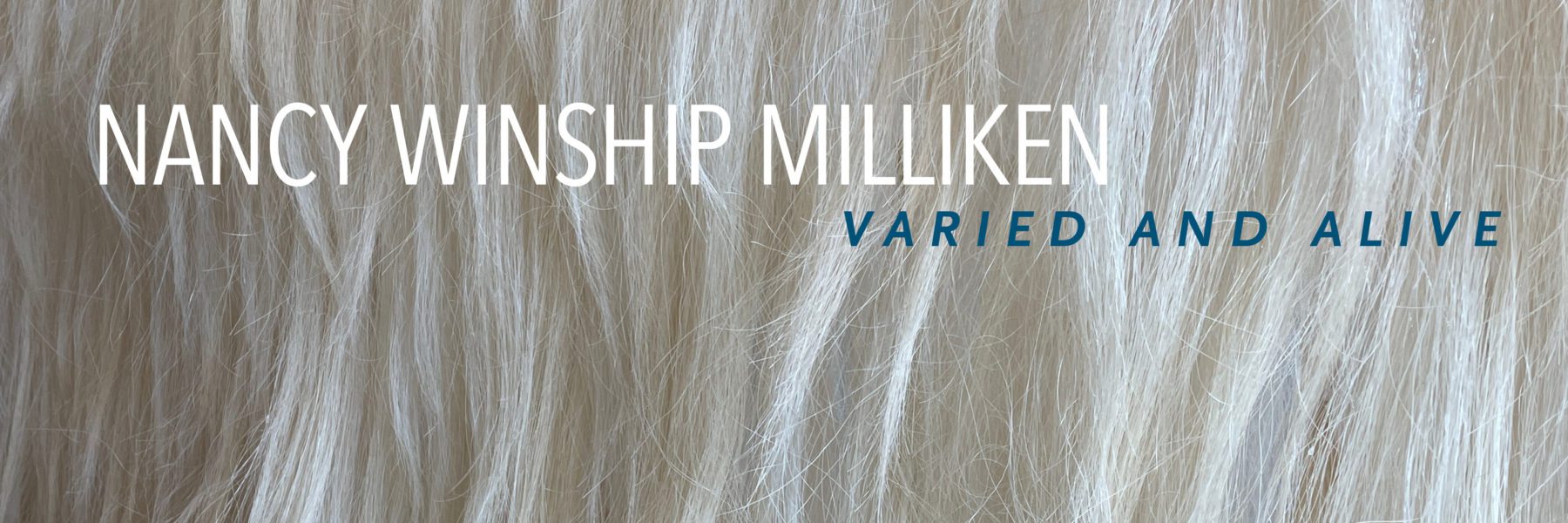
In 1948, one year after founding Shelburne Museum, Electra Havemeyer Webb wrote, “I want [Shelburne Museum] to be an educational project, varied and alive, that will instill in those who visit a deeper understanding and appreciation in heritage.” Today, as the Museum celebrates its 75th anniversary, this site-specific outdoor exhibition, Nancy Winship Milliken: Varied and Alive, embodies Webb’s early convictions. Winship Milliken’s four monumental sculptures, set in a pollinator meadow, reflect the Museum’s commitment to environmental stewardship and sustainability while also inviting conversations on local and global ecological issues and sustainability. Featuring a variety of natural materials—from raw wool to driftwood, all elements intrinsic to this region—each sculpture uniquely moves, changes, and adapts to the environment, reflecting the “varied and alive” nature of the work, the environment, and Shelburne Museum.
The four sculptures—Pasture Song, Meadow Breath, Lake Bones, and Earth Glow—are multisensory, multidisciplinary explorations of the natural environment. Unifying the distinct sculptures are allusions to Vermont’s agricultural buildings, bountiful fields, and landscapes. Fabricated in collaboration with historic preservation and restorationist, Eliot Lothrop, each of the minimalist post and beam structures are joined with traditional mortise and tenon joints. Surrounding and embracing the sculptures is a pollinator meadow, which provides a habitat for bees, butterflies, hummingbirds, moths, and other insects, is created and generously donated by the non-profit organization Bee the Change.
Winship Milliken describes her sculptures as “contemporary pastoralism.” They are evocative of abstract landscape paintings while also providing critical insight into contemporary environmental issues while conveying a reverence for nature. Activated by the wind and sun, the sculptures and the meadow both adapt to their environment, subtly transforming throughout the duration of this exhibition. Winship Milliken welcomes these changes, understanding that she is not the sole creator of this installation. “These sculptures react, respond, and transition in their own unique ways, and in their own timeline, in the environment [in which] they are presented,” she asserts. “It is a goal to let the environment have the last say and make its mark.”
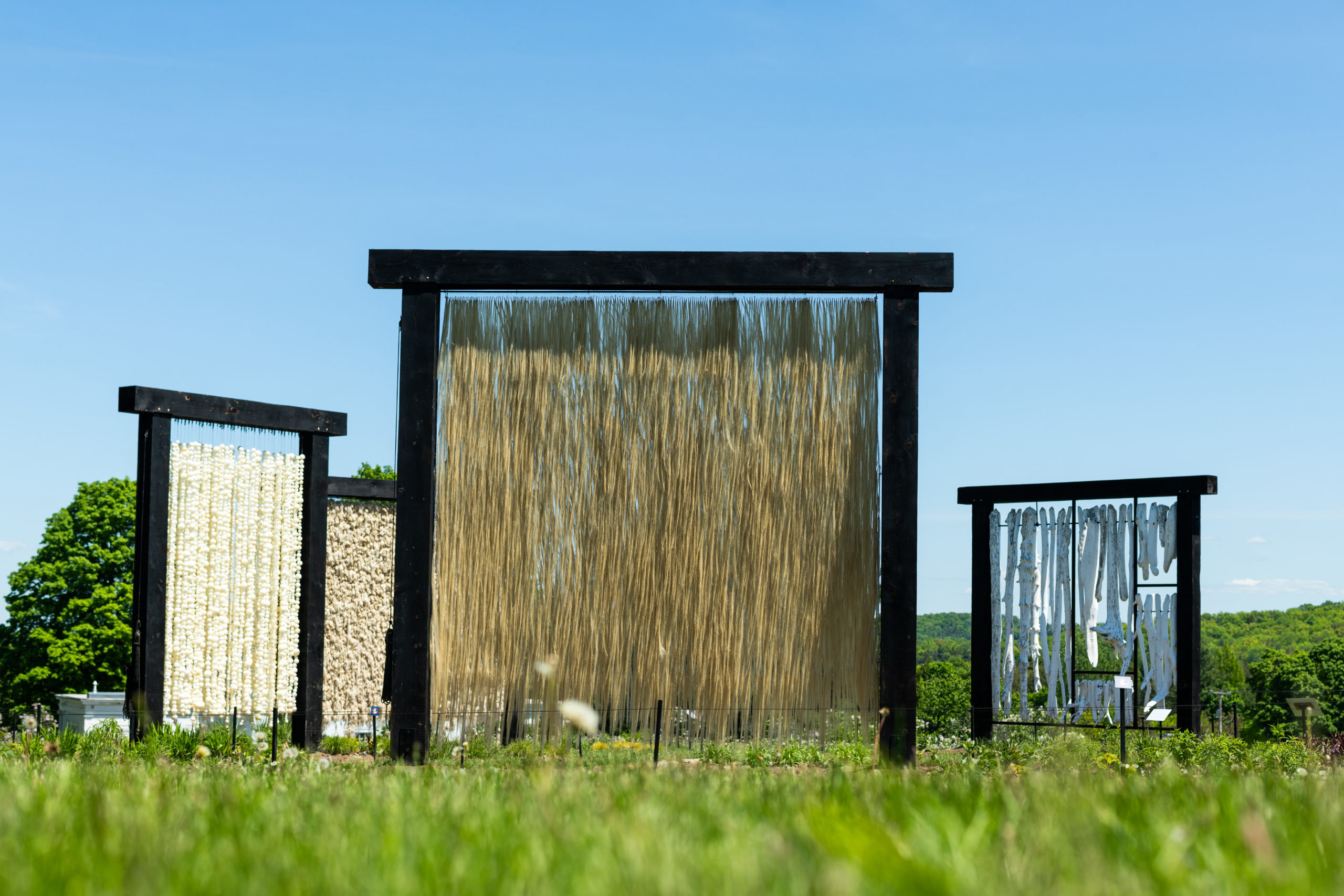
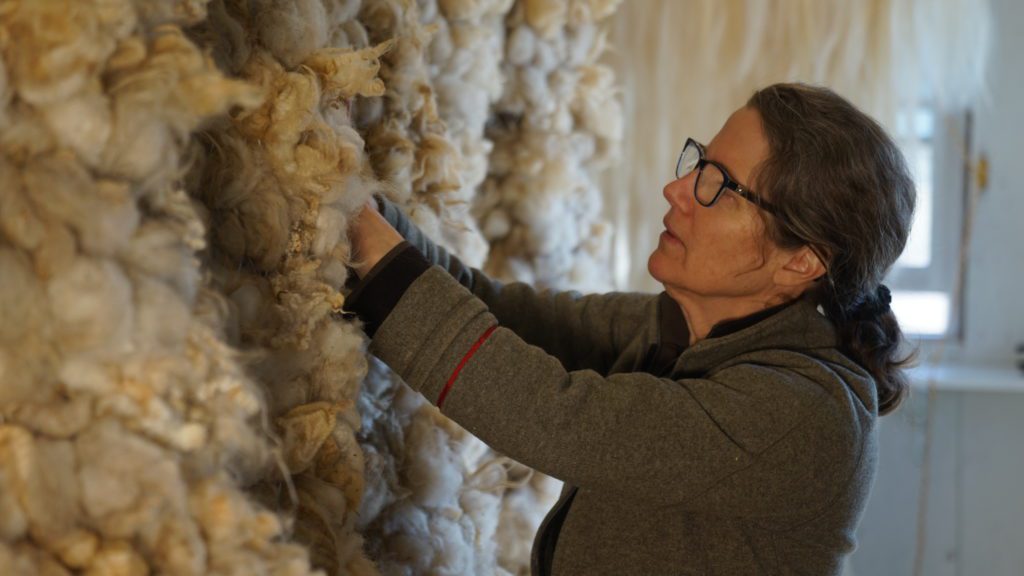
Nancy Winship Milliken Studio is an environmental art studio located in Shelburne, Vermont, that is committed to building community through collaborative expressions of reverence for the land, humans, and animals. Winship Milliken creates site-specific sculptures in both urban and rural settings using natural materials to engage in ecological and sustainability conversations.
Winship Milliken earned her MFA from Massachusetts College of Art and Design in 2008. Over the past decade, she has installed site-specific work in a variety of locations, from New England to New Zealand. Milliken’s work has been included in international solo and select group exhibitions at many venues, including deCordova Sculpture Park and Museum (Lincoln, Massachusetts); Boston Sculptors Gallery; Brattleboro Museum & Art Center (Vermont); Burlington City Arts (Vermont); the Christian Science Plaza (Boston); Provincetown Art Association Museum (Massachusetts); and Qorikancha Museum (Cusco, Peru).
Learn more about the artist and the Nancy Winship Milliken Studio by visiting her website and following her on social media

“If places are stories waiting to be unearthed, artists could be the storytellers who can relate the local to the grander, more familiar and, perhaps, more insidious narratives.”
–Lucy Lippard, American writer, art critic, activist, and curator
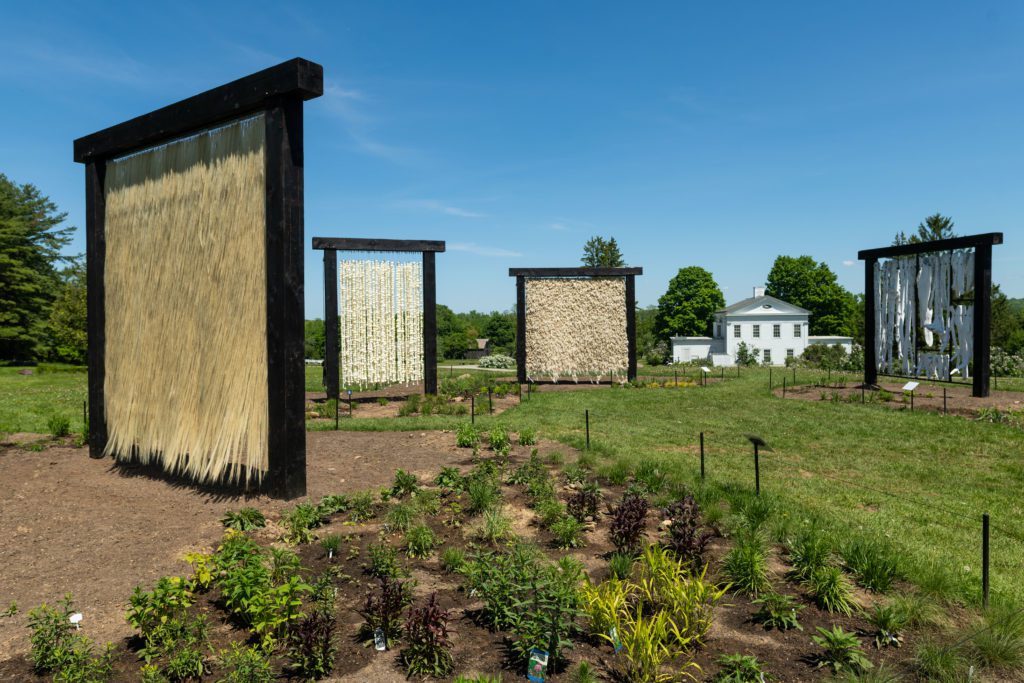
In reflecting on her artwork, Winship Milliken finds that “the connection between process and product are very closely linked.” When creating a site-specific installation, the artist first studies a location’s narrative, taking in its natural environment and cultural history. Already intimately familiar with Shelburne’s ecology—the artist’s studio is only a couple of miles away from the town center—Winship Milliken became more attuned to the Museum’s founding history and its diverse collections and grounds. The Museum’s 2021 construction of two solar arrays to generate renewable energy, reflective of its ongoing commitment to sustainability, also inspired and informed this installation. Through the use of distinct materials, the exploration of contemporary environmental topics, and the convening of community, Varied and Alive illustrates the Museum’s past while also celebrating its present and future in its stewardship of land and place.
Shelburne Museum’s founder Electra Havemeyer Webb was a visionary ahead of her time who assembled an art collection like none other, including horse-drawn carriages, quilts, decoys, dolls, and carousel animals in addition to fine art. Webb founded the Museum in 1947 as an institution—in her words—“varied and alive,” which upheld her interest in abolishing hierarchies within art appreciation and celebrating American fine art, craft, and design equally. Winship Milliken, likewise, shares an appreciation for humble, everyday objects, as her own artwork is composed of natural and abundant materials. Winship Milliken refers to the elements she uses in her art practice as “materials of the commons,” local elements that are often easily found and produced naturally in mass. Winship Milliken believes her passion for such materials aligns with Webb’s collecting interests. “She collected common items such as duck decoys and quilts,” the artist states. “My sculptures are the environmental collection the materials of the past and the future. By taking them out of context we are highlighting the materials of the commons.”
Central to Shelburne Museum’s mission, and shared with the artist’s own beliefs and intentions through her work, Varied and Alive creates and fosters community through conversations surrounding our roles within and relationship to nature. Moving and adapting to the landscape, this exhibition reflects the “varied and alive” nature of the work, the environment, and Shelburne Museum.
View process and images of the artist’s studio here:
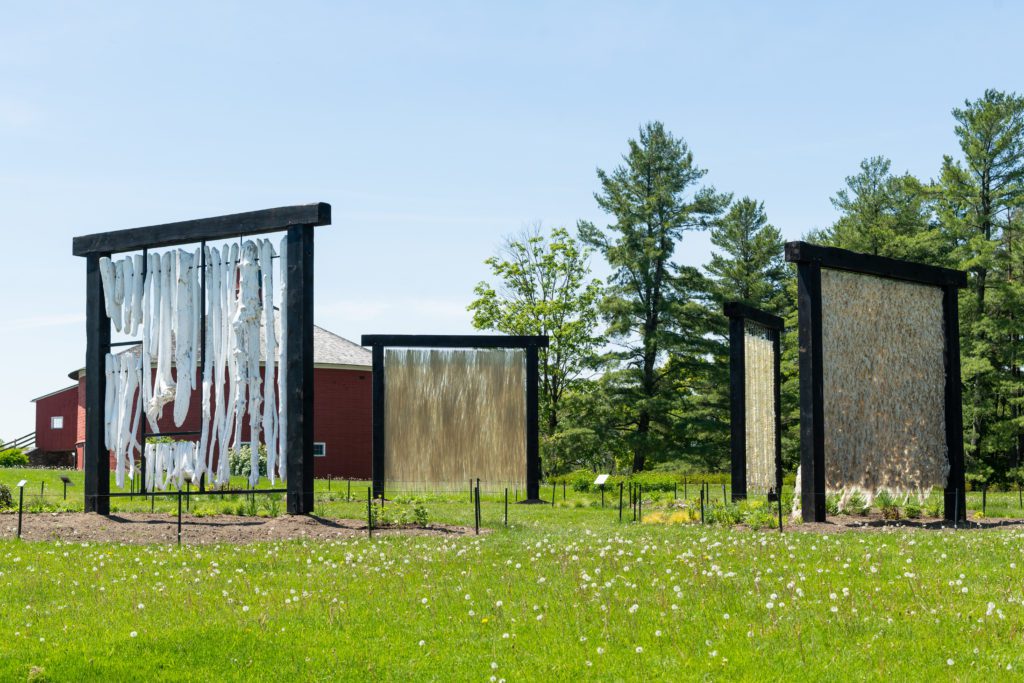
When experiencing Varied and Alive in person, visitors are encouraged to spend time witnessing the environmental elements of sun, wind and rain, and taking in the sculptures from every viewpoint. The location of Varied and Alive was specifically chosen for this prominent location near the main entrance to the Museum, as the sculptures’ scale and shapes compliment and play with the Museum’s diverse architecture, landscape, and natural forms and surrounding it. “Humans seek rhythm, patterns, and symmetry,” Winship Milliken says. “They bring peace and order to our visual field. The columns of the nearby Pizzagalli Center for Art and Education offers such an architectural rhythm. The layout of the exhibition has been designed with the elements of the environment as the key players. Choices of which sculpture needs to orient which way for the wind and sun dictated the placement of the forms. It brings to mind for me, a small herd of grazing animals within the meadow, oriented this way and that.”
“Celebratory Ecology calls each of us to spend time outdoors, to observe colors, movement, presences and absence of species, and yes, to simply enjoy the bounty. We celebrate ecology and are inspired to do all within our power to protect, and learn about this essential life-giving ecosystem.”
–Eleanor Robinson, environmental advocate, community leader, naturalist, and teacher
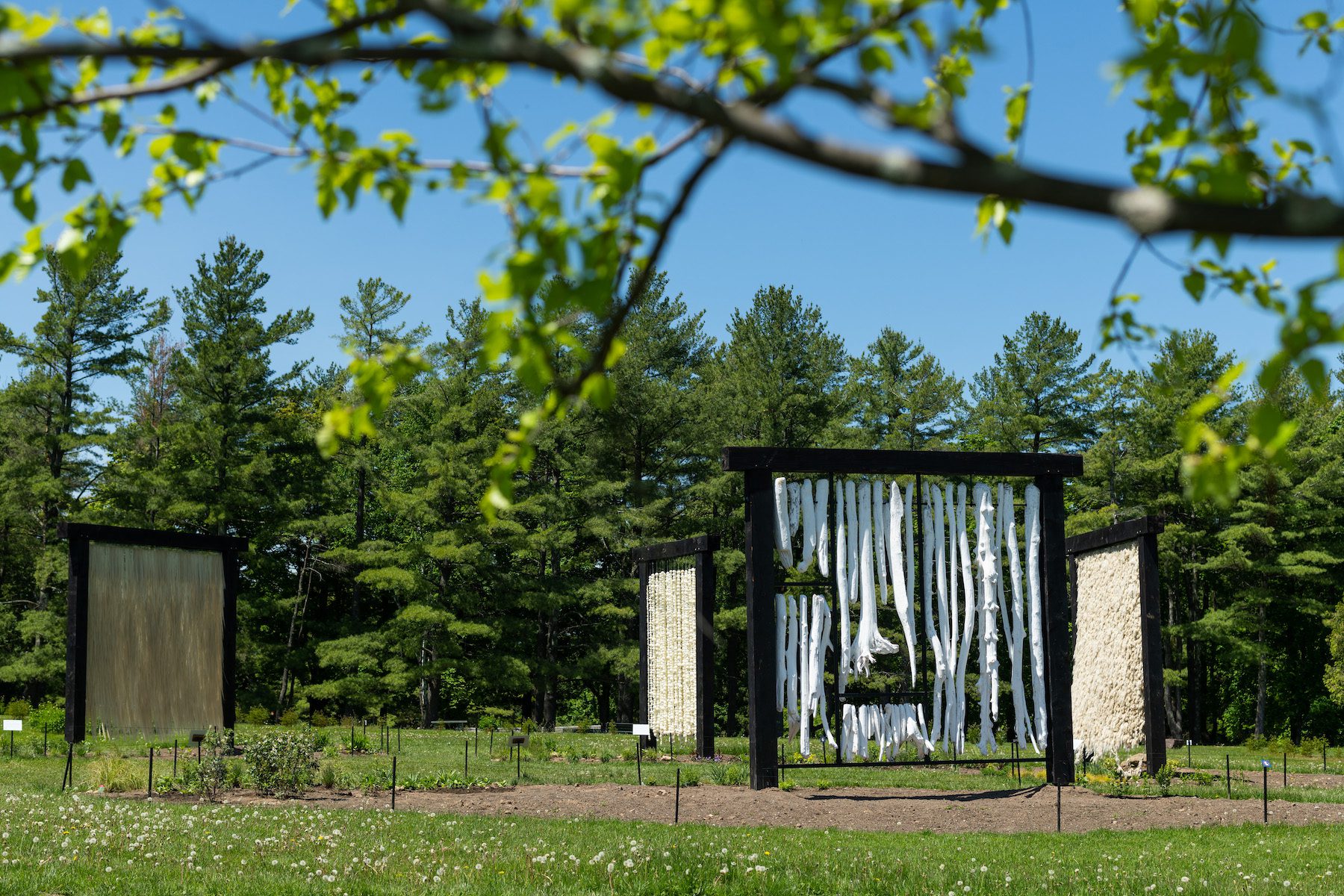
“The word monumental comes from the Latin word moneo, which means to remember. Culturally, we often create monuments for two reasons: to celebrate what we value and to remember people or events. These kinetic monumental sculptures featuring natural materials, inspire to do both, they remind us of our relationship to nature, and celebrate the beauty of our natural environment.
Monuments are conceived of the past, but are designed for the future. They create places where we can organize, exchange ideas, celebrate, grieve and reflect. Varied and Alive offers the space for reflection of our local natural history, and a place to celebrate nature, or ecology, as Robinson mentions, and to mourn those species and ecosystems we have lost.
As creatives during this time of anthropogenic environmental change, we do not have time to be subtle in our work. We can use our creative platform to awaken the public by shining a light on the emotional spaces vs. the data driven spaces of the climate crises. Creating opportunities within one’s own community to gather all sectors of society and engage with the public on matters pertaining to climate crises (not separate from racial and gender justice) is something the art sector can lead. As such, the scale of the exhibition is demanding of our attention. I think the environment has something to say. Here, the scale hardly matches the actions that are needed by us all.
Two years ago during the pandemic, my studio created an online project with an intrepid group of interns called The Place Where Project. We invited the public to tell their stories of place during the stay-at-home order. Some of the examples offered reflected an emotional relationship to place, such as “The Place Where I gather my thoughts” or “The Place Where tall trees bend.” For me, if I was to describe this space of Varied and Alive, I might call it, “The Place Where the bees sing,” or “The Place Where the wind dances.” It is my hope that Varied and Alive becomes a place where everyone can gather, experience, and share.”
—Nancy Winship Milliken
“Land and people—their presence and absence—makes place and its arts come alive.”
–Lucy Lippard, American writer, art critic, activist, and curator

“Collaboration is critical to ensuring sustainability, and as such, it is the backbone of my work in the studio,” Winship Milliken says. “Working with others enlivens, alters, and expands the message and scale of the work. Ilt offers an environment of stories and possibilities beyond any one person.
Varied and Alive is the result of several contributors and community-members, including the key partnerships with historic preservation and restorationist Eliot Hays Lothrop and Mike and Tawnya Kiernan of Bee the Change whose contributions unite Winship Milliken’s distinct sculptures with ties to Vermont’s agricultural buildings and bountiful meadows. “For the first time in my studio’s exhibition history, we are incorporating the message of restoration. Both Hays Lothrop and Bee the Change restore habitat and architecture, and by working together, this exhibition amplifies the story of restoration of the landscapes and the ecosystems for wildlife and plant habitats in those landscapes.”
In collaboration with Hays Lothrop, each of the minimalist post and beam structures are joined with traditional mortise and tenon joints, structures that refer to Vermont’s architectural history. Hewn from of locally sourced and milled lumber, each of the timbers have been applied with a distinct blackened patina. While this method of charring and oiling the timbers deters extensive rot and insect infestation, it also creates a bold, contrasting frame for the interior materials.
Inspired by the arrangement of color, sound, smell, and movement found in the fields that surround her home and studio, Winship Milliken’s sculptures are likewise installed within a similar environment. Surrounding and embracing the sculptures is a pollinator meadow, which was generously donated and created by Bee the Change. This nonprofit organization, devoted to supporting pollinators, has also created larger pollinator-friendly meadows surrounding the Museum’s solar arrays. The garden will grow and change throughout the duration of the exhibition, providing a habitat for bees, butterflies, hummingbirds, moths, and other insects critical to food security.
View process images of the beams here:
Installation collaborators: Eliot Hays Lothrop and Mike and Tawnya Kiernan of Bee the Change
Engineer: John Higgins, Artisans Engineering
Nancy Winship Milliken Studio Assistants: Jill Williamson and Katie Gorson
Join Nancy Winship Milliken: Varied and Alive featured artist to explore her artistic practice, materials, and message. This is the first video in a three-part series exploring the work of Nancy Winship Milliken – stay tuned for part two coming in mid-late June!